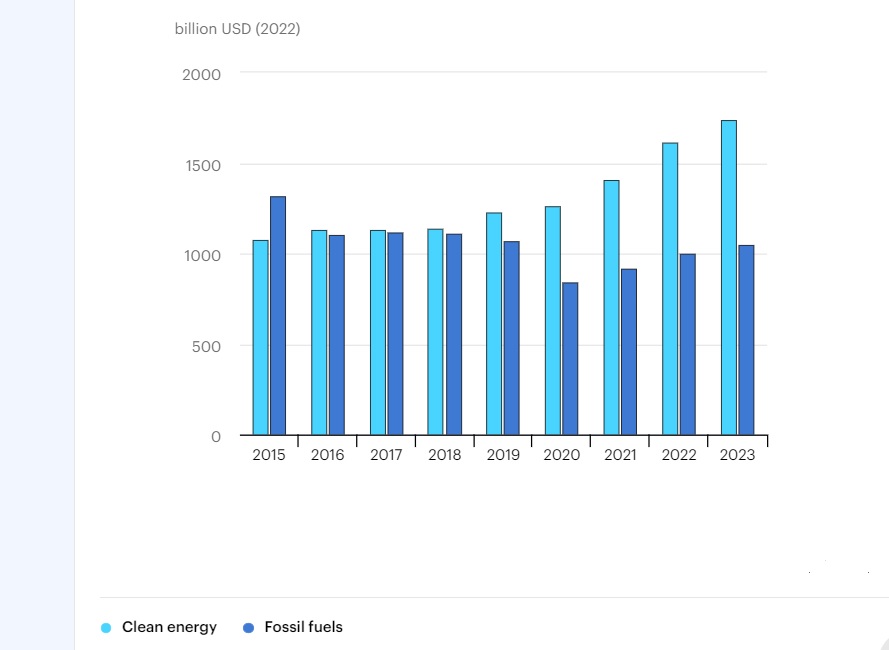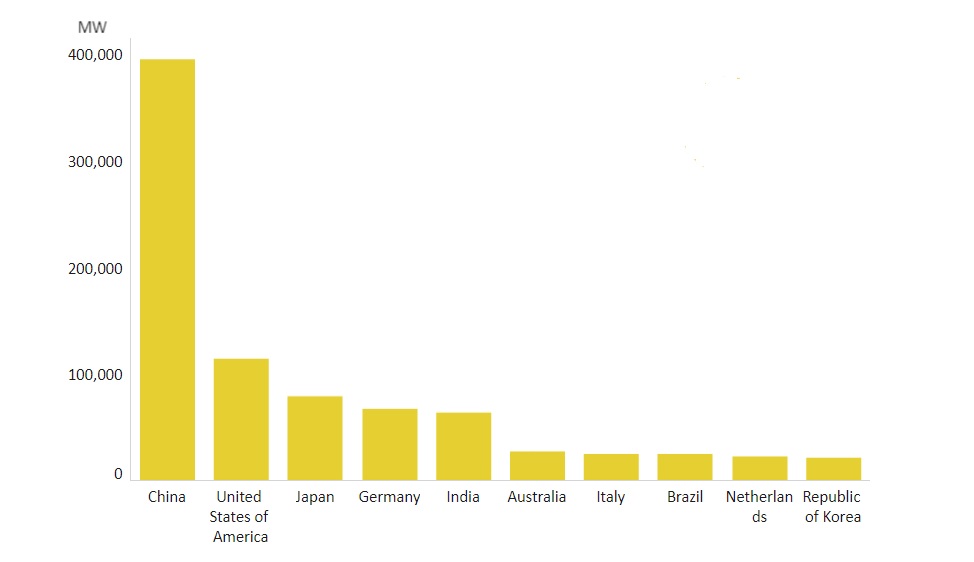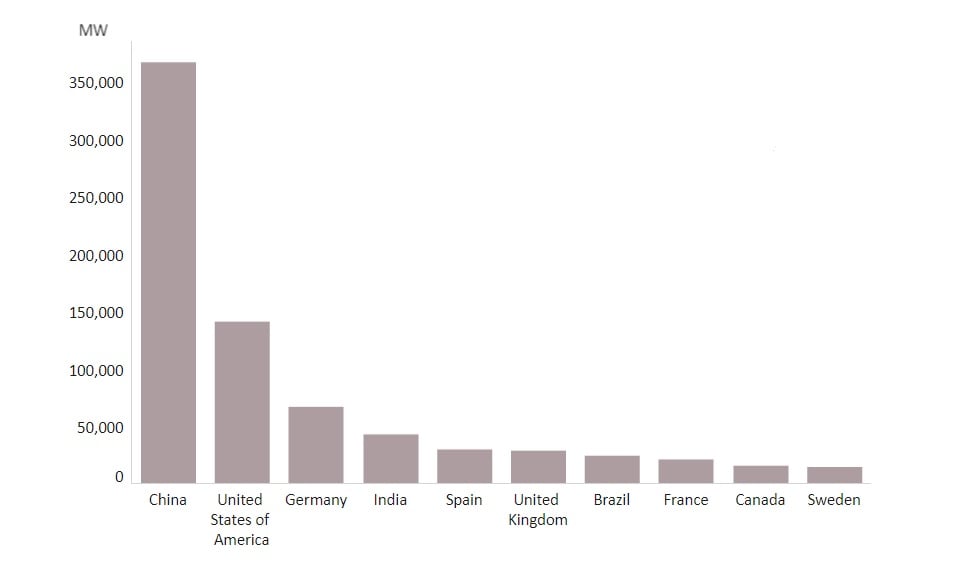Renewable energies have become an increasingly attractive and necessary alternative in the search for more sustainable and environmentally friendly energy sources.
In this article, we will explore the potential of two renewable energy sources, in particular: solar power and wind power.
wind energy uses the wind as a source of energy, wind turbines capture the kinetic energy of the wind and transform it into electricity. This form of renewable energy is especially interesting due to the availability and predictability of wind in many regions. Additionally, wind farms can be built both on land and offshore, offering great flexibility in terms of location.
Solar energy is a renewable and sustainable source that uses solar radiation to generate electricity. Through solar panels, sunlight is converted into clean and abundant energy. It is an alternative to fossil fuels, reducing energy dependence and carbon emissions. Furthermore, solar systems are modular, scalable and can be installed in various locations. Its growth has been driven by cost reductions and technological advances, making it a viable and promising option for the energy future.
Both sources of renewable energy have enormous potential to meet the growing demand for energy and reduce our dependence on fuels. The integration of large amounts of solar and wind energy into existing electrical networks requires the implementation of efficient storage systems and the improvement of transmission and distribution infrastructures.
With more than a century of history, solar photovoltaic and wind energy have become a renewable energy with exponential growth around the world. “According to the International Energy Agency (IEA) (Figure 1), it is expected that, in 5 years, the electricity generation capacity from renewables will grow by 50% and more than half of this increase is due to the increase in the installation of photovoltaic solar panels” 1 .

Global-energy-investment-in-clean-energy-and-in-fossil-fuels-2015-2023 1
Renewable energy generation capacity
Solar energy
Solar panels, also known as photovoltaic (PV) panels (Figure 2), are designed to directly convert sunlight into electricity. They have become one of the best known and most accessible renewable energy technologies. They work using the photovoltaic effect, where sunlight excites electrons in solar cells, generating a flow of electricity.
The increasing efficiency and decreasing costs of solar panels have made them a viable option for residential as well as commercial and industrial applications.
The International Energy Agency (IAE) has published the ranking of countries that lead the generation of electrical energy thanks to the sun, including China (approximately 400,000 GW), the United States (more than 100,000 GW), followed by Japan and Germany. (Figure 2) 1 .

Wind power
It is the energy produced by the wind, currently there are systems to take advantage of the kinetic energy of the wind and transform it, later, into electrical energy through wind turbines.
This source of energy presents the advantages and disadvantages of solar energy: it is inexhaustible, clean, non-polluting, and, once the installation for its capture is done, free. But at the same time it is dispersed, intermittent and occurs irregularly in terms of its intensity.
Wind energy is considered among the forms of clean and renewable energy, with which it is possible to continue acquiring electrical energy, without having important ecological consequences. However, it is also necessary to reflect that the use of conventional wind turbines can cause a degree of visual and acoustic pollution, as well as threats to wildlife, specifically the death of birds due to collisions with the blades of large equipment. It is true that there are no major consequences as in the case of fossil fuels, but it is necessary to find a way to counteract them.
Between 1990 and 2018, in the ranking of countries that lead the generation of electrical energy thanks to the wind are China (more than 350,000 GW), the United States (more than 150,000 GW) and Germany (more than 50,000 GW), followed by the India and Spain (Figure 3) 1 .

Advances in Photovoltaic and Wind technologies
The landscape of green energy technologies has expanded considerably in recent years, offering various options to meet the growing demand for clean and sustainable energy.
Continued advances in these technologies, along with supporting policies and investment, promise a transition to an alternative energy-powered future.
By embracing and further developing these renewable solutions, we can mitigate the impacts of climate change while fostering a greener, more sustainable planet for generations to come.
The potential of different alternative energy technologies to meet the current and future energy needs of the industry and local communities can be analyzed taking into account geographic and climatic variations.
Renewable energy sources, such as wind and solar, are becoming more affordable as they emit little to no greenhouse gases, are readily available, and in most cases more cost-effective than coal, oil or gas.
In general, there are various energy technologies and programs available to meet the energy needs of industry and local communities, and they are constantly evolving to become more efficient, cost-effective, and sustainable.
In recent years, wind farms and photovoltaic plants have substantial power generation capacities. However, in recent years, photovoltaic technology has seen significant advances, resulting in higher efficiency and lower costs.
environmental benefits
Wind and solar power are two renewable sources of energy with numerous benefits for the environment. These clean technologies have a positive impact in terms of emissions reduction, air quality, resource efficiency, carbon footprint and economic development.
First, wind and solar energy contribute to the reduction of greenhouse gas emissions, helping to mitigate climate change. By not emitting carbon dioxide or other pollutants during electricity generation, these renewable sources are an emission-free alternative to fossil fuels.
In addition, its use entails a significant improvement in air quality. By avoiding the burning of fossil fuels, air pollution levels are reduced and, as a result, the risks of respiratory and cardiovascular diseases associated with exposure to pollutants are reduced.
Wind and solar energy also stand out for their efficiency in the use of resources. By harnessing wind and solar radiation, naturally available and virtually inexhaustible sources, these technologies ensure a sustainable supply of energy in the long term, without relying on finite resources such as oil or natural gas.
In terms of their carbon footprint, wind and solar power have a low footprint compared to other energy sources. Although an initial amount of energy and materials are required to build the infrastructure, long-term electricity generation is virtually emission-free, helping to reduce environmental impact.
Finally, wind and solar energy drive economic development and job creation. The renewable energy industry is generating a wide range of jobs in installation, maintenance, research and development. In addition, the development of renewable energy projects boosts the local economy, diversifying sources of income and promoting energy independence.
energy independence
The implementation of clean energy sources, such as solar, plays a crucial role in reducing energy dependence on fossil fuels and foreign energy sources.
By diversifying the energy mix and promoting domestic green energy production, countries can improve their energy security and reduce vulnerability to price fluctuations and geopolitical uncertainties.
Accelerating photovoltaic production contributes to greater energy independence, promoting long-term sustainability and resilience in the energy sector.
Alternative energy technologies, particularly wind power and photovoltaics, offer enormous potential to promote energy efficiency, cost effectiveness, and environmental sustainability.
By taking advantage of solar energy, societies can reduce their energy dependency, improve energy efficiency and contribute to a greener and more sustainable future.
Conclusion
Renewable energies, such as solar and wind, have enormous potential to transform our current energy system. As technology advances and costs come down, these energy sources are becoming increasingly competitive and viable on a large scale. It is important that governments, companies and society in general continue driving the transition towards a more sustainable future and make the most of the potential of renewable energies to guarantee a cleaner and more resilient planet.
In addition, it is essential to continue investing in research and development to improve the efficiency of solar panels and wind turbines, reduce installation and operating costs, and find innovative solutions for energy storage.
Bibliographic references
- IEA World Energy Investment “Global investment in clean energy is on course to rise to USD 1.7 trillion in 2023” (2023). Consulted on May 25, 2023 from: https://www.iea.org/
- IRENA The International Renewable Energy Agency (2023). “Renewable energy capacity or electricity generation by country”. Accessed on May 25, 2023 from: https://www.irena.org/Data/View-data-by-topic/Capacity-and-Generation/Country-Rankings


